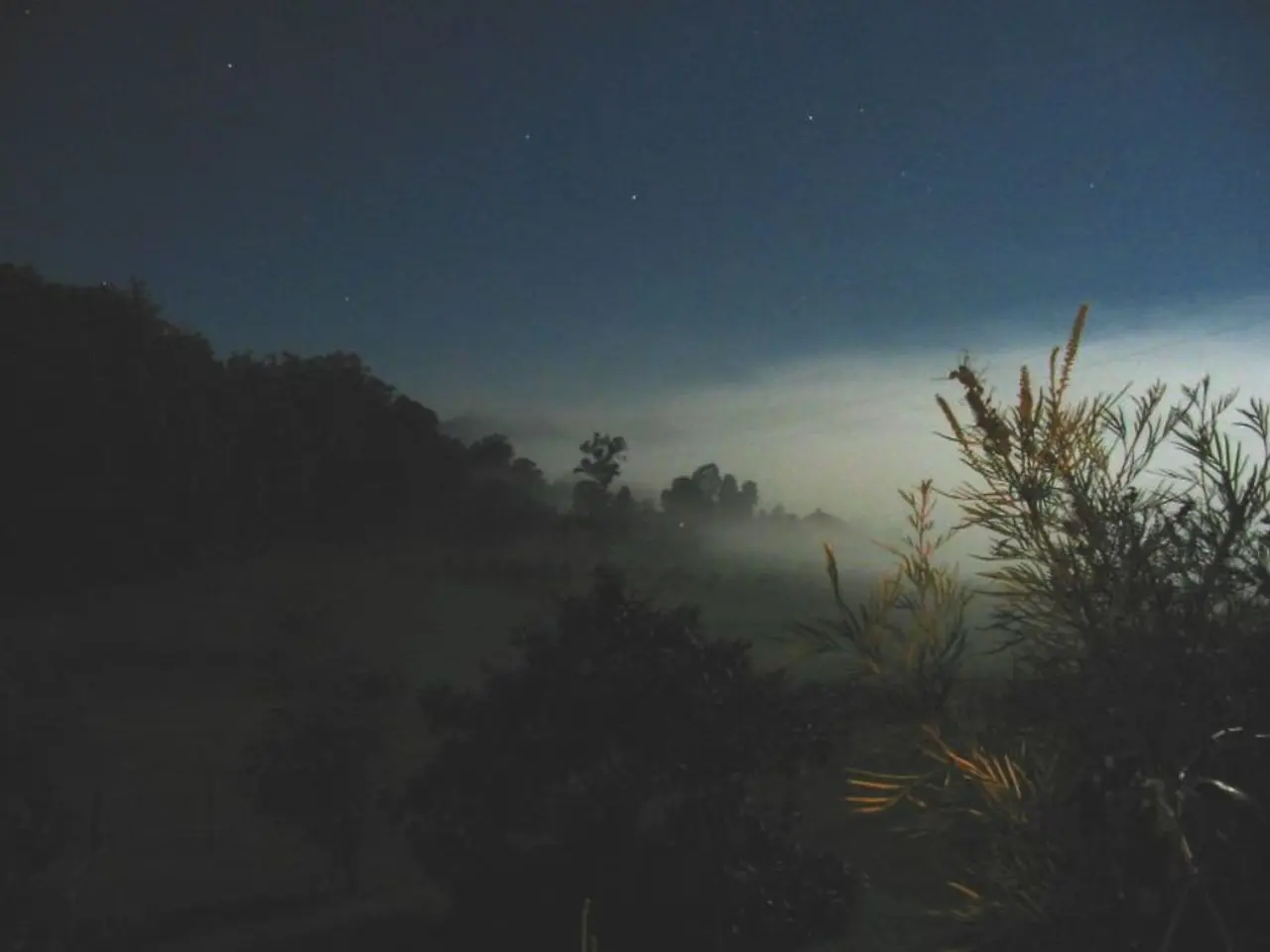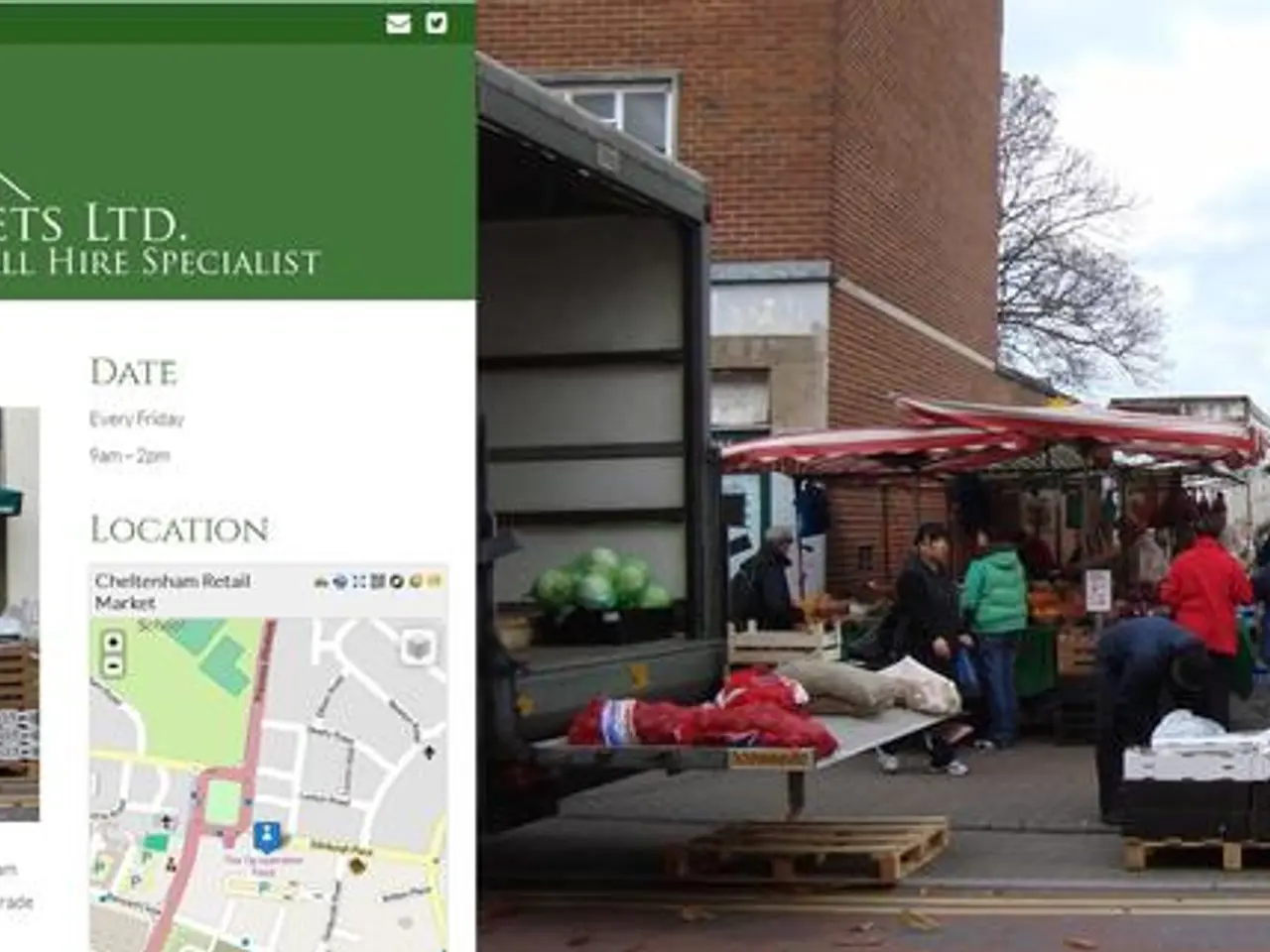August Astronomy Guide: Stargazing Highlights for the Night Sky in 2025's August
Get ready, stargazers! August 2025 promises to be an exceptional month for astrophotography, with a dazzling array of celestial events just waiting to be captured.
On Tuesday, 12 August, prepare for a breathtaking celestial duo as Venus and Jupiter draw less than a degree apart before sunrise. To capture this breathtaking spectacle, a telephoto lens (200-600mm) can compress the scene dramatically, making the moon loom large behind foreground elements. Wide-field compositions that include the eastern horizon and early morning color, or zoomed-in shots filling the frame with the two planets, are recommended.
From 16-26 August, the Milky Way will grace our skies, arcing from high in the southeast down to the southern horizon right after dark. A dark-sky location is essential for photographing the Milky Way during this period. For sharper stars, use a star tracker and expose for 2-3 minutes at lower ISO. Even a single bright "shooting star" crossing a Milky Way background can make a great image during the Perseid meteor shower. A dark-sky location, a wide-angle lens (14-24mm), ISO 3200, and a 15-20 second exposure are recommended for photographing the Perseid meteor shower on 15 August.
The peak of the Perseid meteor shower on 12-13 August coincides with a bright moon, which may reduce the visibility of fainter meteors. However, conditions improve slightly a few nights later, on 15 August.
On Sunday, 31 August, Venus and the Beehive Cluster (M44) in Cancer will be visible together just before sunrise. To photograph Venus and the Beehive Cluster, use a 100-200mm telephoto lens and aim for maximum darkness before nautical twilight brightens the sky.
Additional highlights for astrophotographers include the conjunction of Saturn and Neptune on 6 August, offering a chance to capture two distant planets in the same field. Two shadow transits of Titan across Saturn on 3 and 19 August, visible through telescopes, along with other moon transits (Enceladus and Tethys on 3 August), are ideal for detailed planetary system imaging.
An interstellar comet (3I/ATLAS) traveling through our solar system presents a rare opportunity to photograph a comet from beyond our system. Observation of Mars near specific bright stars (Beta Virginis, Porrima, and Spica) for planetary imaging, although telescopic detail will be limited, is also recommended.
On 1 August, Venus will be at its highest point in the morning sky for the year, an hour before sunrise, east of the horizon, in the winter constellation Orion. The full 'Sturgeon Moon' rises on 8 August, glowing low in the southeast shortly after sunset. A clear eastern view and the use of apps like PhotoPills can help align the moon with a landmark for a classic moonshot moment.
So, mark your calendars and prepare your gear for August 2025. This month is shaping up to be a stellar opportunity for astrophotography enthusiasts!
- To capture the close approach of Venus and Jupiter in August 2025, a telephoto lens with a focal length of 200-600mm is recommended.
- During the Perseid meteor shower on 15 August, a dark-sky location, a wide-angle lens (14-24mm), ISO 3200, and a 15-20 second exposure are ideal.
- The Milky Way will be visible from 16-26 August, and a star tracker, a wide-angle lens (14-24mm), lower ISO, and 2-3 minute exposures can lead to sharper stars.
- On 15 August, the Perseid meteor shower coincides with a dark-sky location and offers opportunities for capturing single 'shooting stars' crossing the Milky Way background.
- A 100-200mm telephoto lens is recommended for photographing Venus and the Beehive Cluster in Cancer on 31 August.
- The conjunction of Saturn and Neptune on 6 August offers a chance to capture both distant planets in the same field using a suitable camera lens.
- Shadow transits of Titan across Saturn on 3 and 19 August, and other moon transits (Enceladus and Tethys on 3 August), are ideal for detailed imaging using a telescope.
- An interstellar comet (3I/ATLAS) traveling through our solar system provides a rare opportunity for capturing images beyond our system, equipped with a suitable camera and telescope.
- Observation of Mars near specific bright stars (Beta Virginis, Porrima, and Spica) for planetary imaging, although telescopic detail will be limited, is recommended.
- On 1 August, Venus will be at its highest point in the morning sky for the year, and the use of apps like PhotoPills can help align the moon with a landmark for a classic moonshot moment.
- The full 'Sturgeon Moon' rises on 8 August, and a clear eastern view can help capture an iconic image of the moon glowing low in the southeast shortly after sunset.




